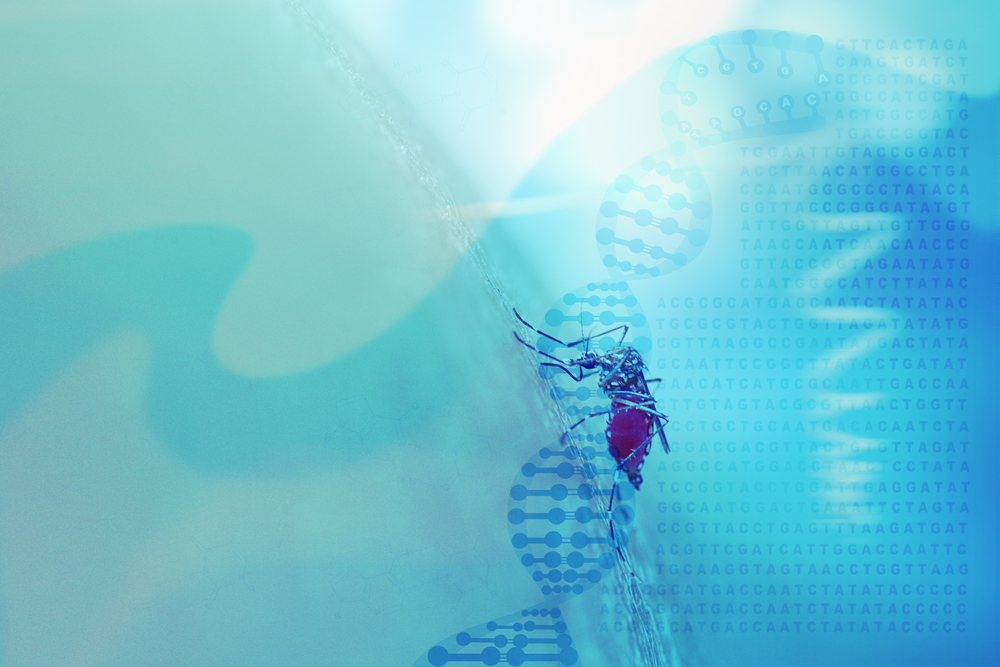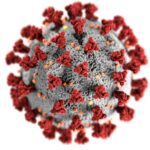Genetically Modified Mosquitoes Have Officially Been Released in the US

In the ongoing battle against mosquito-borne diseases, the stakes have never been higher. Aedes aegypti mosquitoes—tiny, unassuming creatures—are responsible for spreading some of the world’s most dangerous viruses, like Zika, dengue, and yellow fever. As traditional control methods struggle to keep up, scientists have turned to genetic engineering to craft a groundbreaking solution.
Enter genetically modified mosquitoes: a revolutionary approach that’s stirring both hope and curiosity. How can altering the genes of these pests help protect public health? What makes this method so different from the strategies we’ve relied on for decades? The answers lie in a fascinating mix of biology, technology, and the relentless pursuit of innovation.
What Makes GM Mosquitoes Unique?
Genetically modified mosquitoes represent a technological leap in the fight against disease-spreading insects. Unlike traditional methods such as insecticides—which can harm beneficial insects like bees and face diminishing effectiveness as mosquitoes develop resistance—GM mosquitoes offer a more targeted and sustainable solution. These mosquitoes are not just regular pests; they are engineered with precision to address specific challenges posed by their wild counterparts.
At the heart of their uniqueness are two ingenious genetic modifications. The first is a self-limiting gene that ensures female offspring—the ones responsible for biting and spreading diseases—cannot survive to adulthood. This disrupts the reproductive cycle, significantly reducing the population of Aedes aegypti mosquitoes over time. The second modification is a fluorescent marker gene, a practical innovation that causes these mosquitoes to glow under specialized red light. This glowing feature allows researchers to easily identify GM mosquitoes in the wild, track their movements, and monitor their impact on local populations.
What sets GM mosquitoes apart is their ability to operate with surgical precision. They specifically target Aedes aegypti mosquitoes, leaving other types of mosquitoes unaffected. This precision reduces collateral damage to ecosystems while focusing on controlling a species notorious for transmitting diseases like Zika, dengue, and yellow fever. It’s this combination of precision, sustainability, and innovation that makes GM mosquitoes an extraordinary tool in public health.
Where They’re Buzzing Around

Genetically modified mosquitoes have officially taken flight in targeted locations across the United States, marking a pivotal step in the fight against mosquito-borne diseases. Florida and Texas have been at the forefront of these efforts, serving as testing grounds for this innovative approach. In Florida, the picturesque Keys became a hotspot for the release of these lab-engineered insects. Here, wild Aedes aegypti mosquitoes, although constituting only about 4% of the total mosquito population, are responsible for almost all mosquito-borne diseases affecting humans in the region. The urgency to tackle this specific species made the Florida Keys an ideal environment for testing.
The project involved the release of hundreds of thousands of nonbiting male mosquitoes over several months. These lab-bred males, equipped with their unique genetic modifications, were designed to mate with wild females, passing on their self-limiting gene. This meticulous process was closely monitored, using advanced tracking tools to study the movement and impact of the genetically modified mosquitoes. Results from these pilot programs have provided critical insights, not only into the success of the method in reducing mosquito populations but also into the logistics of implementing such programs on a larger scale.
Although Florida and Texas are the primary test sites in the U.S., this strategy has already made waves in other countries, including Brazil, Panama, and India, where similar releases have shown promising results. These field trials are not just about reducing mosquito numbers but also about refining the process and gathering data that could pave the way for broader implementation in more communities across the globe.
How Do They Work? The Science Behind the Sting

The brilliance of genetically modified mosquitoes lies in their ability to subtly disrupt nature’s most bothersome disease carriers. The process begins with the release of nonbiting male Aedes aegypti mosquitoes, which have been genetically engineered in labs. These lab-bred males carry a self-limiting gene that becomes the game-changer when they mate with wild female mosquitoes. Once the self-limiting gene is passed on to the offspring, it ensures that female mosquitoes—those responsible for biting and transmitting diseases—cannot survive to adulthood. Meanwhile, male offspring continue the genetic legacy, reducing the population of disease-spreading females with every generation.
Adding to this precision is the fluorescent marker gene embedded in these mosquitoes. This ingenious feature enables researchers to monitor the modified mosquitoes in the wild. By glowing under a special red light, the mosquitoes can be tracked, helping scientists assess their spread, lifespan, and effectiveness in reducing populations.
The mechanics of this approach target the Aedes aegypti species with pinpoint accuracy, leaving other types of mosquitoes and beneficial insects unaffected. Over time, as more females fail to reach maturity, the population of this disease-carrying species dwindles. What’s even more remarkable is the collaborative way these mosquitoes integrate into nature, using their biological instincts to tackle one of the world’s most persistent public health threats—all without the need for harmful chemicals or sweeping disruptions to local ecosystems.
Success Stories in Numbers

The deployment of genetically modified mosquitoes has already proven its potential through various pilot programs across the globe. In Brazil, one of the earliest testing grounds, the impact was nothing short of extraordinary. Oxitec’s experimental release of genetically modified Aedes aegypti mosquitoes led to an 80% reduction in the target mosquito population in the test areas. This remarkable outcome demonstrated the efficacy of this technology in significantly curbing the numbers of disease-spreading mosquitoes.
Similarly, the Cayman Islands, Panama, and India have reported impressive results from their trials. Collectively, since the initiative began in 2019, over 1 billion genetically modified mosquitoes have been released worldwide. These tests have not only reduced the population of Aedes aegypti mosquitoes but have also provided invaluable data on the logistics and feasibility of scaling up this approach.
In the United States, recent pilot programs in Florida and Texas have shown promising early results. Researchers have been carefully monitoring the movement, mating behavior, and genetic impact of these modified mosquitoes in the wild, collecting data that will inform future expansions. The sheer scale of these efforts and the measurable outcomes so far highlight the potential of genetically modified mosquitoes to revolutionize mosquito control and reduce the risk of mosquito-borne diseases in vulnerable communities.
Safety First: Regulatory Green Lights

The release of genetically modified mosquitoes into communities is not a casual decision; it’s a carefully regulated process backed by rigorous scientific evaluations and government oversight. In the United States, the Environmental Protection Agency (EPA) plays a pivotal role in ensuring that this groundbreaking approach to mosquito control meets all safety and health standards. Prior to any release, an Experimental Use Permit (EUP) must be granted, allowing local mosquito control programs to assess the effectiveness of genetically modified mosquitoes in specific areas. This ensures that every step is meticulously monitored and validated before moving forward.
In addition to federal authorization, state and local authorities must also give their approval. These additional layers of regulation underscore the emphasis on community safety and environmental protection. Extensive reviews by the EPA have confirmed that the release of genetically modified mosquitoes poses no risks to humans, animals, or the surrounding environment. This reassurance has paved the way for their deployment in counties across Florida and Texas.
Global organizations, such as the World Health Organization (WHO), have also provided guidelines for the use of genetically modified mosquitoes. Their recommendations focus on safety, ethics, and research methodologies, ensuring projects adhere to high standards at every stage. With these regulatory frameworks in place, scientists and public health officials can confidently advance the use of genetically modified mosquitoes, knowing that safety remains a top priority.
Complementing Traditional Mosquito Control

While genetically modified mosquitoes are a remarkable innovation, they are not a standalone solution. These engineered insects are designed to target a specific species, Aedes aegypti, which is notorious for spreading diseases like dengue and Zika. However, most communities host a variety of mosquito species, many of which can also pose health risks. For this reason, integrated mosquito management strategies continue to play a vital role alongside the deployment of genetically modified mosquitoes.
Traditional mosquito control methods—such as the use of insecticides, habitat reduction, and bacterial treatments like Wolbachia—are still critical in addressing the broader mosquito population. Techniques like draining standing water, which serves as breeding grounds for mosquitoes, and using mosquito traps remain essential in reducing the number of pests in communities. Genetically modified mosquitoes act as an additional, highly specialized tool within this broader framework, targeting the problem at its biological core without replacing other established approaches.
By combining these advanced technologies with proven traditional methods, communities can develop a more comprehensive and sustainable mosquito control strategy. The coexistence of these techniques ensures that all bases are covered, protecting public health on multiple fronts while reducing reliance on harmful chemicals. It’s a symbiotic relationship—science and tradition working hand in hand to tackle an age-old problem.
Behind the Scenes: How They’re Produced

The journey of genetically modified mosquitoes begins in a sophisticated laboratory setting, where science meets innovation to tackle one of nature’s smallest, yet most problematic pests. The production process focuses on two crucial genetic modifications: the self-limiting gene and the fluorescent marker gene. The self-limiting gene is the hero of the operation, specifically designed to target female mosquitoes—the ones responsible for biting and spreading diseases. When passed on to offspring, this gene prevents females from reaching adulthood, thereby curbing their population over time.
The second modification, the fluorescent marker gene, is equally clever. This gene causes the mosquitoes to glow under a special red light, making it easy for researchers to identify them in the wild and monitor their movement. Using advanced tools, scientists mass-produce male Aedes aegypti mosquitoes carrying these genetic modifications. These males are harmless to humans, as they don’t bite and feed only on nectar, but they play a pivotal role in passing the genes to future generations of mosquitoes.
Once the eggs carrying these genetic tweaks are laid, they are carefully transported to areas where mosquito control efforts are needed. The process is precise and methodical, ensuring that each mosquito plays its role in reducing disease-carrying populations. From the lab to the field, the production of genetically modified mosquitoes represents the perfect blend of biology and technology aimed at protecting public health.
A Buzzing Solution for a Global Problem
The release of genetically modified mosquitoes represents a bold and innovative step forward in the fight against mosquito-borne diseases. By harnessing the power of science and technology, researchers have created a targeted and sustainable solution that holds the promise of protecting millions of people from debilitating illnesses like Zika, dengue, and yellow fever. While the journey from lab to the wild is both complex and meticulously regulated, the results so far are encouraging, sparking hope for communities plagued by these relentless pests.
This approach isn’t just about controlling mosquito populations—it’s about rewriting the narrative of public health, blending cutting-edge genetic engineering with traditional mosquito management strategies. And as the results continue to pour in from around the globe, one thing becomes clear: these tiny, glowing game-changers are shaping a healthier future, one buzz at a time.
Loading...
Related Content
 When Science Shows Our Bones Can Rise Again
When Science Shows Our Bones Can Rise AgainBy Prince Ea





